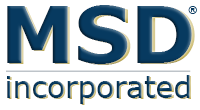I was relaxing at home one evening, watching one of my favorite travel channels. I admit it. I live vicariously through other people’s travel adventures. The featured trip was a river cruise in Portugal. The most I knew about Portugal was that it’s native language is Portuguese, and that the language is shared with natives of Brazil.
What I learned on this particular show was that Port Wine gets its name from the place where it was originated, and is still the only place that can export it – a town called Porto, in Portugal. Well, that makes sense. This is only a trivial, although interesting fact, that will probably never come up in my conversations, but I still enjoy learning this type of thing from documentary television. I really enjoy documentaries that teach gourmet cooking tips, geography the teachers skipped in high school, and obscure historic facts.
So, what does this have to do with Technical Writing? As the name of “documentary television” indicates, it documents facts about people, places, and things, then passes on those stories to the viewer. You may also be aware that many major companies hire Chief Storytelling Officers to sell the public on the quality of their company or a product, but how often do you think of a Technical Writer as a storyteller? Like the Chief Storytelling Officer, the Technical Writer documents facts and tells a story.
The story is about data, programming, testing, user guidance, administrative tasks, product specifications, and white papers for information technology projects.
It should be obvious to the Technical Writer that their position is really one of storyteller. And the methods of doing this require a specialized knowledge of tools that combine art with technology. What are the tools? I’m glad you asked. Here are a few.
- Excel Spreadsheets – Actually this could be any type of spreadsheet.In fact, the first one I ever learned to use was Quattro Pro. It had the same bells and whistles. Spreadsheets permit data entry, and programming of cells to run logic, macros, and formulas that produce things like amortization of loans, comparisons, sales figures, sales taxes, commissions, and numerous other statistical data. Visuals are produced in tables, graphs, and charts. It can even be used for complex predictive analysis.
- Word Documents – The program Word came after Word Star and Word Perfect.No problem if you don’t know what those are, but they did the same type of job as Microsoft Word. Word can be used for many purposes including writing reports, whitepapers, guides, meeting minutes, and other types of document presentations.
- PowerPoint – Best known for performing technical presentation, this can go beyond boring black letters on white card decks.It lends itself well to Wireframes that can be used for projects, webpages, and interactive work of any type. By nature, Wireframes are plain on purpose, and can facilitate discussions about project upgrades, particularly in agile implementations, where multiple people have input.
- Flowcharts – There are many types of software that can be used for flowcharts, including Word and PowerPoint.More specialized tools include Analyst Notebook, Renoir, Visio, Lucid chart, Edraw,ConceptDraw, Cacoo, Smartdraw, Creately, Gliffy, RF Flow, and Edge Diagrams. Even if the project involves Agile programming, rather than Waterfall (previously referred to as Top Down or Bottom Up) database charts that show processes the data is going through, or inter-relationships of elements may be important.
- Graphic Software – Most stories can be enhanced with the addition of pictures.Use of InDesign and other graphic software can produce drawings, logos, and other visual objects.
- CAD – For engineering projects, the Technical Writer who knows Computer Aided Drafting and Design (CADD) will be much more effecting in telling the story.They can use Solidworks, or AutoCad to produce and manipulate 3D drawings that document objects with specific dimensions. These drawings can also be used to make 3D Printed objects. The astronauts recently used this ability to make repair parts for the space station while they were in outer space. The main issue they had to overcome was weightlessness causing shifting of the printer and affecting the viscosity of the materials. They were apparently able to work around both issues, making real parts, and of course documenting the processes.
- Videos – Social media and cellphone popularity have made online video presentations quite popular.For projects that require more exposure, video carries an impressive visualization. Webinars and TED X Talks give technical insights to even the everyday, non-technical individual. If people who are interested in the subject are unable to make it to a presentation, videos provide them with playbacks.
- Laptops – An adaptable computer permits the Technical Writer to work from anywhere.No longer does a writer have to rely on the library computer, and textbooks to gather important information. The Storyteller can be in an office, but can just as likely work at home or in a coffee shop, when there are no classification concerns.
- Cameras – Photographs are useful to show finished products in modeling or engineering.LikewisePhotoshop, InDesign, and other software can be used with photographs to make them more effective.
- Technical Knowledge – Although the tools previously listed are important in Storytelling, the ability of the Technical Writer to learn different things about emerging technologies is of the utmost importance.Knowledge is rapidly increasing, and technology rapidly changing. It is essential that the writer also be an avid reader and student of new technologies.
About the Author
Jean Fischer is a Senior Technical Writer with Meta-Systems Documentation, Inc. (MSD). She is a communications consultant specializing in technical writing for emerging technologies, information technology, marketing, and intelligence. Connect with Jean today!
